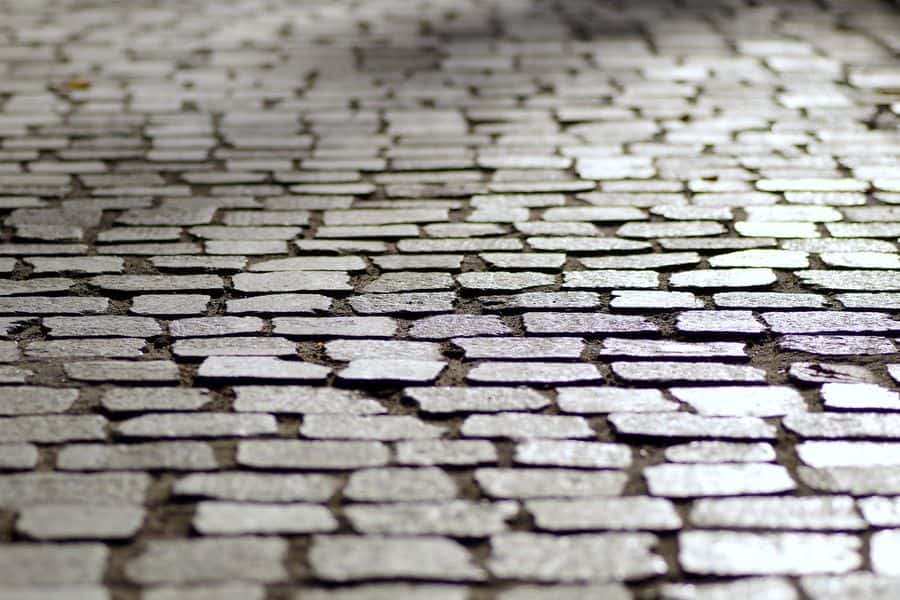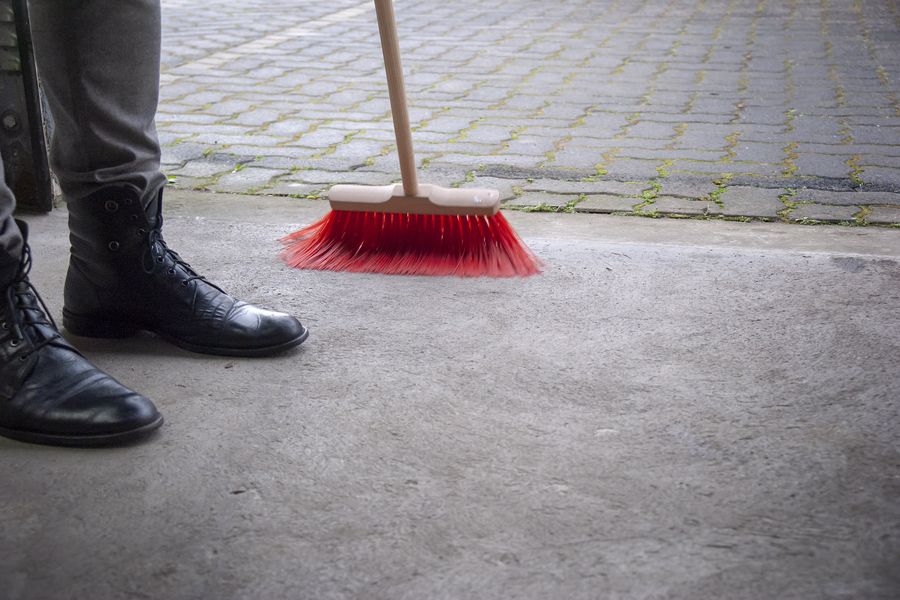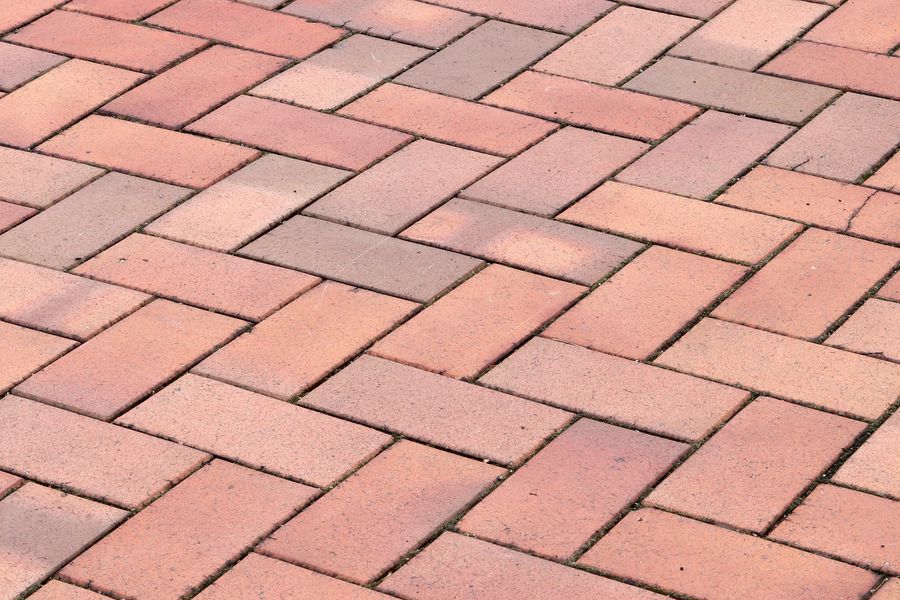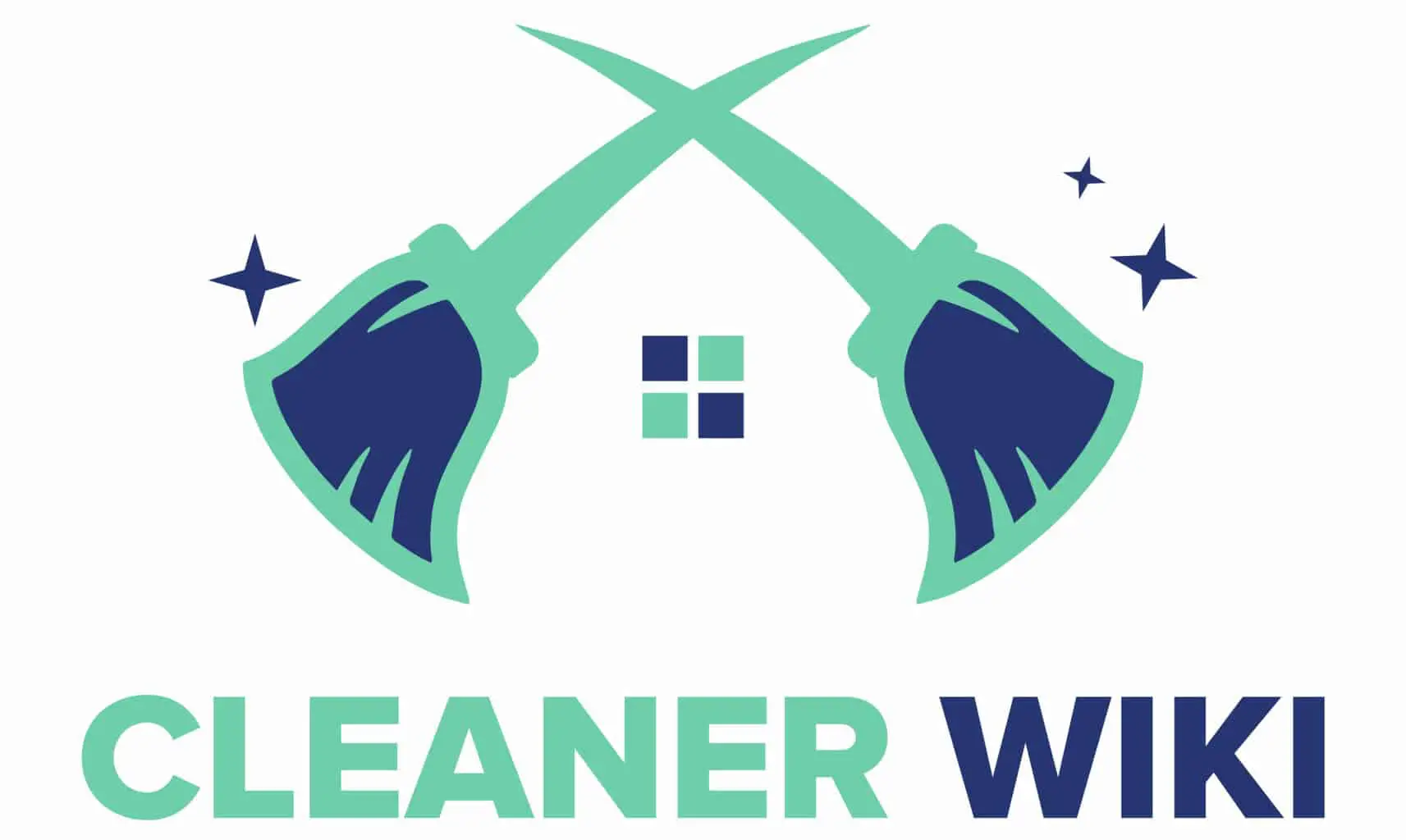As an Amazon Associate we earn from qualifying purchases.
A hollow brick serves as a natural coolant; not only that, it creates vibrations in one’s body that can heighten positivity. That’s why bricks are a timeless choice for flooring. However, they need timely maintenance for durability.
Here is a step-by-step guide on how to clean brick floors that will help you retain the rustic vibe of your brick flooring for a long time.
How To Clean Brick Floors
Bricks are composed of clayey materials that trap air easily, which makes them porous. That’s why over time, the staining particles get trapped in the hollow spaces. To clean your brick floor, gather the following supplies, and let’s get started.
Material Required
- Soft-bristled Broom or Vacuum Cleaner
- Mop
- Bucket
- Vinegar
- Lemon Juice
- Baking Soda
- Ammonia
- Dish Soap
- Borax
- Window Cleaner

Step #1: Everyday Cleaning
One should start with sweeping the brick flooring as it helps in getting rid of dirt and grit particles from the grouting and the brick floor.
Please don’t go with harsh brooming as it can scrape the brick flooring. Choose a broom that is gentle to your flooring, or go with a vacuum that works fine.
Lastly, proceed with mopping to sweep away the leftover dirt. If your flooring is new, then cleaning won’t be a challenging task. But, as time passes, the grout can level down due to several reasons, including cleaning.
Thus, one has to clean their floor daily depending upon the condition of the flooring.
Step #2: Make A Cleaning Solution
What is better than dry mopping? Mopping with disinfection! An Environmental Protection Agency (EPA) study reveals that disinfection can protect one from life-threatening bacteria and viruses.
There are various methods to disinfect the floor from contaminants; you can use a fragrant floor cleaner or make one on your own by following the listed methods.
White Vinegar Mix
Synthetic White Vinegar is an all-rounder cleaner everyone has in their homes. It not only kills the bacteria but also prevents any further contamination of the surface after cleaning.
To clean your brick floor using vinegar, mix ½ cup of white vinegar with one gallon of water in a bucket. Use a wet mop to clean the floor using this mixture.
Mopping With A Window Cleaner
You must be surprised to know that your window cleaner can serve as an excellent floor cleaner.
Use a window cleaner along with a few parts of water and see the magic. You will notice that stains and dirt marks are not there anymore.
Dish Soap Solution
Dish soaps are best suited to get rid of grease and stains. Apart from removing grime from utensils, they can also be used as a floor cleaner.
Just combine a few pints of dish soap with water and use this fragrant mixture to clean the floor.
Rubbing Alcohol Mop
Rubbing Alcohol has multiple disinfection properties. It not only serves as a good sanitizer but also acts as a good floor cleaner.
Take 2-3 cups of rubbing alcohol and rub vigorously on the floor before the alcohol evaporates. Wipe the floor using a wet mop and see the results.
Borax Cleansing Solution
Borax is a by-product of boric acid, which is used for cleaning purposes.
To use borax powder for cleaning, mix four teaspoons of borax powder in one gallon of water and sweep the floor using a wet mop thoroughly.
Ammonia Liquid As Cleaning Agent
Ammonia is a powerful cleaner (5-10% by weight) to use for cleaning. The alkaline nature of ammonia helps in getting rid of difficult oil and grease marks.
Asammonia is very strong thus, one should handle it with care.
To clean the brick floor using ammonia, mix a few parts of ammonia with water and use it as a disinfectant.
Lemon Juice DIY Solution
An organic alternative to all floor cleaners is lemon. Lemon juice not only kills the germs on the floor but makes the flooring fragrant.
Just slice 4-5 big lemons and squeeze them well. Mix the lemon juice with ½ gallon of water and wipe the floor properly.

Baking Soda Solution
Another floor disinfectant on the list is baking soda. You can either mix it with plain vinegar and water to make a strong concoction or use it just with water.
Beware while measuring; baking soda is abrasive. Thus, too much of it may spoil the flooring.
Mix a few teaspoons of baking soda with ½ -¾ cup of vinegar in one gallon of water to obtain a strong floor cleaner cum disinfectant. Use this solution to get rid of tough stains from your brick floor.
Step #3: Sweep The Floor Correctly
A good cleaning can increase the life of your brick flooring. But, it has been observed that the cleaning drive does not turn out to be much effective. Well, a prominent reason behind this could be improper methods of mopping and sweeping.
That’s why we have enlisted some quick tips to make your cleaning drive even better than before next time.
Few Tips To Make Your Cleaning Effective
- Don’t mop or sweep in circular motions on the grouting. The best way to mop or sweep is to clean directionally. Either move forward or backward while mopping to ensure that your efforts aren’t going wasted.
- Stop using harsh abrasives as a cleaner as they can damage the upper layer of the flooring.
- Dry your flooring immediately after cleaning. Air drying is the best way to dry your floor.
- You can use a steam cleaner to clean your brick floor. Steam cleaners reinforce deep cleaning and, thus, are beneficial to clean old floorings with low grouting.
Step #4: Additional Cleaning
Brick is a by-product of alumina, i.e., clay, and as you know, clay is very porous. This implies that water or any other fluid can penetrate through its surface very easily.
That’s the reason why mosses or lichens grow on brick flooring. Usually, these small living organisms breed on the corners of the brick or the grouting. Mosses breeding inside a brick tile are rare but not impossible.
Therefore, even after a sophisticated cleaning, one needs to check that the flooring is immediately dried after cleaning, or else moisture can help these mosses breed.
If you have mosses or lichens between your brick tiles, you can carry out the following steps to get rid of them.
Process For Removing Lichen
Lichen can breed very easily, and once they grow, it takes a lot of efforts to remove all of them, but here are few things you should remember that,
- You may think of scraping them off using a sharp object, but this will damage the flooring badly. Thus, scrape them using any semi-sharp material that doesn’t damage the flooring.
- Once you are done with scrapping, make sure to disinfect the flooring, or otherwise, they would grow in no time.
- To make a strong disinfectant, use vinegar along with a strong detergent or washing liquid. Make a concoction and spray it on the flooring.
- Another method to remove lichen is to use chlorine bleach, mix bleach with water in a small quantity and spray on the flooring.
- Beware: don’t use chlorine bleach with bare hands. Also, don’t touch your face after using bleach.
- If nothing of the above works, contact lichen removal services.

Process For Removing Mosses
Just like lichen, mosses also grow very easily. Hence, to remove mosses from the brick flooring, you can use a mixture of water and chlorine bleach mixed in a ratio of 1:3.
- Take a floor cleaning brush and dip it in the mixture. Brush on the mosses in back and forth motion. Rub until the mosses are removed.
- Wipe using clean water and dry it immediately.
Here is a video guide that will help you get rid of moss from brick pavers laid outside your home.
Frequently Asked Questions
Is It Safe To Use Power Wash On Brick Floors?
No! A power wash is a high jet stream of water used to get rid of dirt and debris. Bricks are made from slurry and cannot withstand that much pressure from the power wash. That’s why it is not advised to power wash on brick floors.
Is Sealing My Brick Flooring A Good Idea?
Yes! Sealing the flooring protects it from getting stained and damaged. If you are looking forward to sealing your brick flooring, make sure to consult an expert for better supervision.
How Can I Restore The Fading Red Color Of My Brick Floor?
With multiple cleaning, the contrasting red color of the floor may go. To restore the shine of your floor, apply clear-coat products on your floor. Here is a step-by-step guide on how you can fix the glow of your floor.
Conclusion
Bricks originated back in 7000 BCE in Turkey, and since then, they have been on everyone’s favorite list. The rustic finish of the brick flooring adds to the vibe of the space.
But, less maintenance and no regular cleaning can cause long-term harm to your flooring.
Apart from contaminants, mosses and lichens can breed on the corners or the grout of the brick floor. These tiny microorganisms make the floor slippery and spoil the overall look of the floor.
By following this step-by-step guide, you can bring back the charisma of your brick flooring to life once again.
